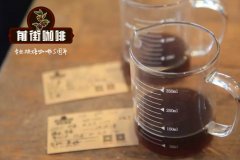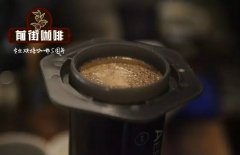Standard beans of Coffee-Colombian Coffee introduces how to drink Colombian coffee?

Professional coffee knowledge exchange more coffee bean information please follow the coffee workshop (Wechat official account cafe_style)
Colombia produces about 12% of the world's second-largest coffee beans, although the output is not as good as that of Brazil, but the coffee beans are of good quality and mostly belong to high altitude areas. After wet processing, the coffee beans are mellow and thick, sweet and sour, and strong. There is a peculiar sweet potato skin flavor, which is a good taste in coffee. It is often used to increase the aroma of other coffees. Due to its rich aroma, it is very suitable for both individual drinks and combinations.
The highest grade product is SUPREMO, which has the average taste of sweet, bitter and sour in acid. The three main varieties produced in the Central Mountains of central Colombia have a rich, delicate taste with an average rich sour taste.
Colombia is the standard bean of coffee, its taste is the average of all kinds of coffee, so the general coffee to distinguish between sweet, bitter, spicy and mellow, are compared with Colombia as the standard.
Colombia is currently the third largest coffee producer in the world, originally second only to Brazil, but in recent years Vietnamese coffee, which specializes in the production of Robusta stout beans, has surpassed Colombia's runner-up status. Colombia first planted so-called commercial beans in the mid-1830s. Coffee beans accounted for the largest share of export crops in the 20th century. The local mountainous terrain, coupled with a variety of tropical microclimate, provides an ideal environment for coffee cultivation. The national planting area is about 875000 hectares. The main varieties include Kaddura Caturra, Colombia Colombia, Tibica Tipica, bourbon Bourbon, Elephant Bean Maragogype, and Tabi. Farms and cooperatives across the country, big or small, are distributed in more than 500000 towns and 14 major coffee producing areas-including Nalinglong Nari ñ o, Cauca of Cauca, Meta of Mehta, Huila of Uila, Tolima of Tolima, Quindio of Kindio, Caldas of Caldas, Risaralda of Lisalda, Antioquia of Antioquia, Valle of Valley, Cundinamarca of Cundinamaka, Boyac á of Boyaca. Santander in Santander province and Norte de Santander in northern Santander province. A total of 2 million Colombians depend on coffee cultivation for their livelihood, contributing 12.5 per cent to the gross domestic product of local agriculture, while 75 per cent of coffee bean production is sold abroad, making it the main source of Colombia's foreign exchange earnings.
Traditionally ripe coffee cherries are washed, although the Coffee Research Center in Colombia has developed a system to protect the ecological environment in the past 15 years, which requires little water and can reduce local water pollution by 90%. And reduce water consumption by 95%. This drying method can not only effectively maintain the ecology, but also ensure the stable quality of coffee, which is unique in Colombia. Farmers on small farms sprinkle shell beans on the flat roof of their homes to dry in the sun, or use plastic sheds if they are at higher elevations and the climate is colder. Colombia is so rich in climate temperature diversity that coffee can be grown and produced almost all year round. The main harvest time is from October of each year to February of the following year, and November and December are harvest periods. The second harvest period is relatively late, which varies according to the microclimate of each producing area.
Aroma aroma / flavor flavor: honey, chocolate, citrus, melon, caramel, plum, raisin
Acid: lemon, tartaric acid, grapefruit
The complexity of complex is similar to that of other: the palate is supple, creamy and mellow, and the finish is long-lasting, sweet and cool.
END
Important Notice :
前街咖啡 FrontStreet Coffee has moved to new addredd:
FrontStreet Coffee Address: 315,Donghua East Road,GuangZhou
Tel:020 38364473
- Prev

What are the characteristics of Brazilian coffee? Introduction of High quality Coffee production area Mandy Kaila Mine in Brazil
Professional coffee knowledge exchange more coffee bean information Please pay attention to coffee workshop (Wechat official account cafe_style) Coffee was first introduced to Brazil in the early 18th century. In 1727 the Brazilian government sent a personable army officer to secretly bring coffee seeds from French Gaiana to Brazil on the grounds of mediating border disputes. It is said that the wife of French Gaiana was deep at that time.
- Next

What's the taste of Yemeni mocha coffee? Yemeni mocha Coffee introduces the characteristics of mocha coffee
Professional coffee knowledge exchange more coffee bean information please follow coffee workshop (Wechat official account cafe_style) Yemen is the first country to use coffee as a cash crop, legend has it that Muslim Sufi pilgrims were introduced from Ethiopia in the 6th century, the most correct spelling should be Al-Mahka, which is spelled in Arabic, growing on steep terrain with little rainfall and poor land ridges.
Related
- Detailed explanation of Jadeite planting Land in Panamanian Jadeite Manor introduction to the grading system of Jadeite competitive bidding, Red bid, Green bid and Rose Summer
- Story of Coffee planting in Brenka region of Costa Rica Stonehenge Manor anaerobic heavy honey treatment of flavor mouth
- What's on the barrel of Blue Mountain Coffee beans?
- Can American coffee also pull flowers? How to use hot American style to pull out a good-looking pattern?
- Can you make a cold extract with coffee beans? What is the right proportion for cold-extracted coffee formula?
- Indonesian PWN Gold Mandrine Coffee Origin Features Flavor How to Chong? Mandolin coffee is American.
- A brief introduction to the flavor characteristics of Brazilian yellow bourbon coffee beans
- What is the effect of different water quality on the flavor of cold-extracted coffee? What kind of water is best for brewing coffee?
- Why do you think of Rose Summer whenever you mention Panamanian coffee?
- Introduction to the characteristics of authentic blue mountain coffee bean producing areas? What is the CIB Coffee Authority in Jamaica?

